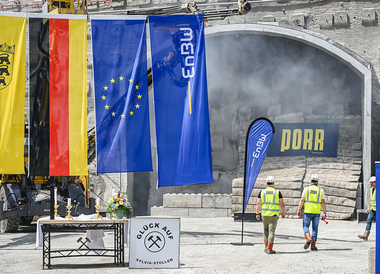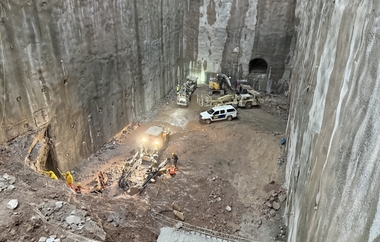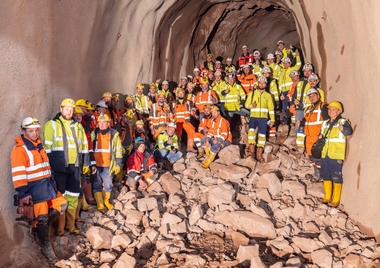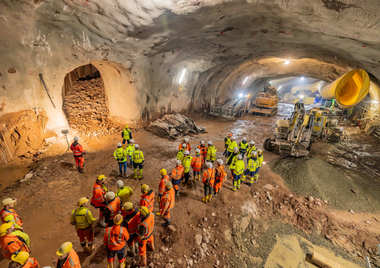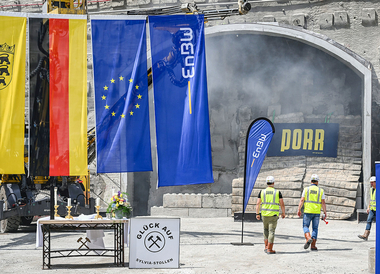Forbach Pumped Storage Power Plant: Preparations for Tunnelling
The Rudolf Fettweis plant in the Murg Valley in Baden-Württemberg will be converted from a storage and run-of-river power plant into a pumped storage power plant by 2027 – a milestone in the energy revolution. The Porr Tunnelling team is responsible for the shell construction of the power plant cavern and cavern water reservoir, the construction of various tunnels and pressure shafts as well as the special civil engineering work.
New Power Plant in the Mountain Increases Capacity by 10 MW
In this concept, the water collected via the Schwarzenbach Dam reaches the newly built cavern power plant, where the new Schwarzenbach power plant (with one pump turbine) and the new Murg plant as a run-of-river power plant (with two turbines) are located. Due to its new position in the mountain, the water flows almost vertically onto the turbine, increasing the output currently generated by 10 megawatts.
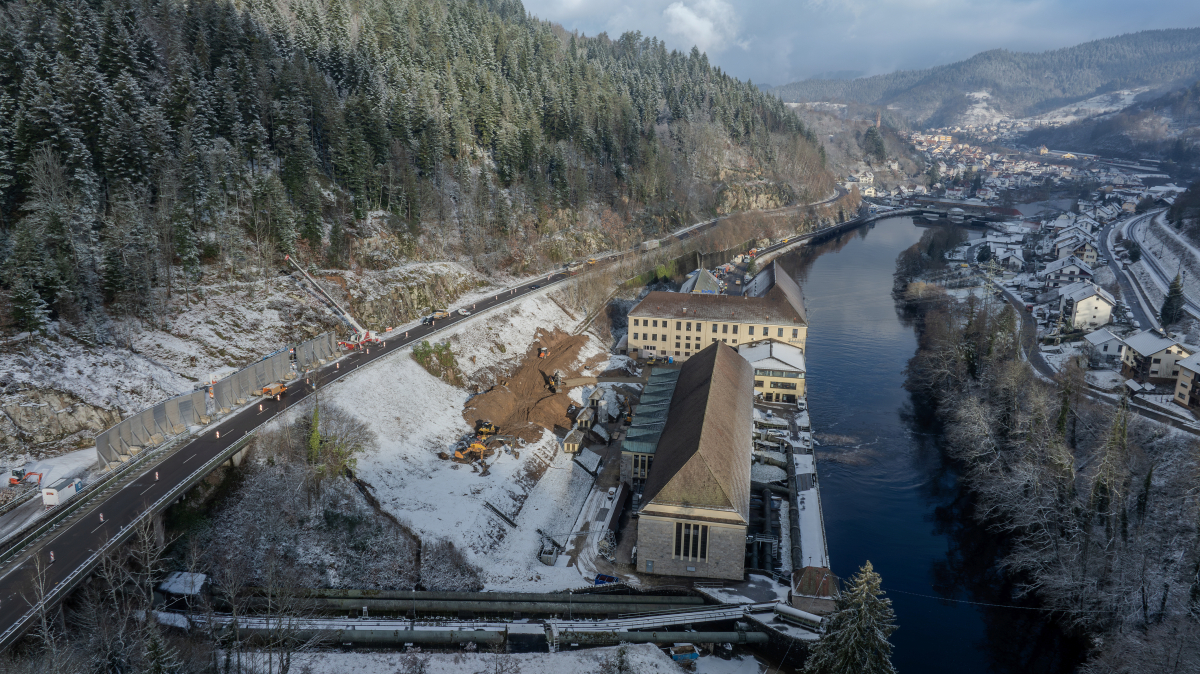 The Rudolf Fettweis plant in the Murg Valley in Baden-Württemberg will be converted from a storage and run-of-river power plant into a pumped storage power plant by 2027
The Rudolf Fettweis plant in the Murg Valley in Baden-Württemberg will be converted from a storage and run-of-river power plant into a pumped storage power plant by 2027
Credit/Quelle: Porr
The power plant is connected to the equalizing reservoir in Forbach via a main tunnel. A further six tunnels provide additional storage space. After being used in the cavern power plant, the water is collected in the cavern storage facility and equalizing reservoir. If necessary, it can be transported from here via the cavern power plant’s pump turbine back to the Schwarzenbach Dam and used again later to generate electricity. The advantage of this setup is that if too much electricity generated from renewable energies ends up in the grid it can be easily moderated by the pumping operation – and is immediately available again when needed.
Planning for up to Four Parallel Tunnel Headings
For the client EnBW, schedule reliability is at the top of the list of priorities. A number of challenges need to be overcome to ensure that the underground construction work starts on time. Porr project manager Torsten Schmuck: “We have to plan and organise up to four parallel tunnelling works in a complex system of tunnels, shafts and caverns. Occupational safety is also a high priority. That‘s why we are setting up a rescue service with our own construction site personnel, who can act safely and quickly in the event of danger in the mountain. In addition, the permits for residential and blasting facilities as well as water permits are associated with considerable effort.”
Protection of People and Nature Takes Priority Throughout All Work
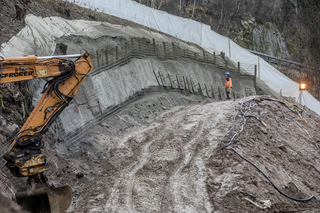 On the five construction sections, the work is focussed on setting up the construction sites and creating the tunnel cuts
On the five construction sections, the work is focussed on setting up the construction sites and creating the tunnel cuts
Credit/Quelle: Porr
On the five construction sections, the work is focussed on setting up the construction sites and creating the tunnel cuts. Excavators will be used to loosen the soft ground in the preliminary cut; the areas located in the rock will be subsequently removed by blasting. At the plant site (construction section 1), Porr is using shotcrete and soil nails to secure a slope under the B462 federal road passing by. The main access tunnel to the cavern is being constructed from this construction site. In the slope areas to the north and south of the spoil removal tunnel (construction section 2), safety nets and fences will be installed to secure the rock. The material that accumulates during the underground work will later be extracted through this tunnel. Noise barriers will minimise the impact on local residents.
The necessary tree removal at the two access tunnels Murgwerk (construction section 4) and Schwarzenbachwerk (construction section 5) had already been completed in the winter period 2023/24, so that excavation and stabilisation work will begin here shortly. In order to protect flora and fauna, they were accompanied by ecological construction supervision. “The location in the upper Murg Valley in the middle of this unique Black Forest region, which is worthy of protection, requires that the impact on the environment and nature, especially the River Murg, is kept to a minimum,” explains Schmuck.


